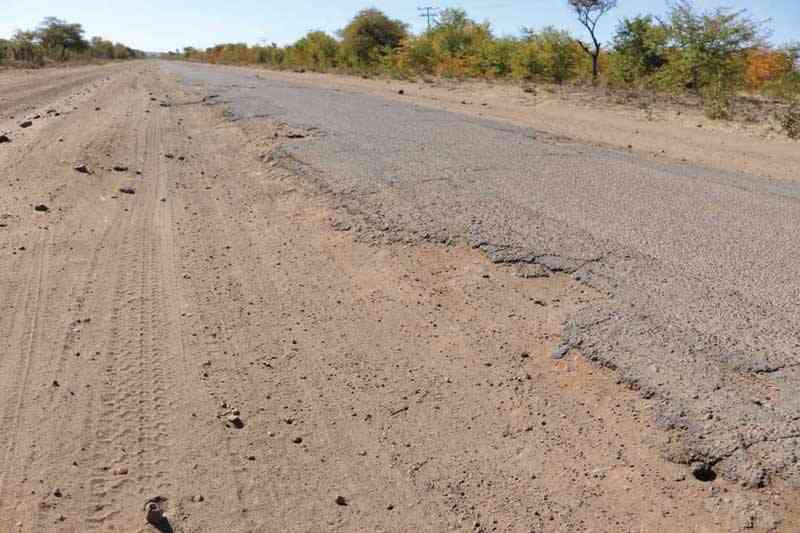
Develop me :Tapiwa Gomo
THE past week was busy, both nationally and globally. Nationally, the curtain finally came down on the Robert Mugabe era. His burial at his village in Zvimba closed the chapter of 95 years of life, 60 years of politics and nearly four decades of national and Pan-African leadership. Whatever ensues in his post-burial era will be nothing but trivialities around his legacy. Maybe the nation can now focus on real issues such as reviving the economy without the disruption of where Mugabe would be buried.
Globally, the Climate Summit and the United Nations General Assembly (UNGA) came and went in a flash like a short rainy season. However, the outcomes of the discussions in these two forums have long term impact on the welfare of the global population. Despite all the fanfare that obtains at the UNGA, this time around there were louder and meaningful voices emerging from the Climate Summit.
While there are still dissenting voices, largely by those protecting their commercial interests, there is an exponentially growing global consensus now than ever before that climate change is upon us and that we all need to do something to mitigate the increasing intensity of its impact. The frequency and impacts of cyclones, flooding, droughts, heat waves, the shifting seasons and others are having a huge impact on the general livelihoods of everyone across the global.
That has a huge bearing on efforts to grow economies and to reduce poverty, especially for developing countries. Big economies too have taken the brunt by either providing humanitarian assistance to affected developing countries or hosting people fleeing the effects of climate change. This is why climate change requires a coordinated and collaborative global approach because the effects are felt far and wide and by everyone whether directly or indirectly.
It is even more scary that the narrative that underpinned the discussions at the Climate Summit was a mixture of preventive measures and also a shift from slowing down climate change by adopting clean energy measures to climate adaption. This shift is an admission of failure to address the former, hence the need to marinate the global mindset towards adaptation. If that is the situation, it then complicates issues for developing countries whose carbon emission is minimal and yet the effects of climate change is massive. Developed countries are the biggest emitters and yet suffer less.
This state of things places a huge burden on developing countries who need to both grow their economies and simultaneous curb or adapt to the effects of climate change. What does adaptation mean for poor countries such as Zimbabwe which are already struggling with frequently erratic rainy seasons and droughts? It simply means, for example, moving away from maize crop production which requires three months of good rains to something else that can produce the same level of harvest in a much shorter period of time with less rains. It is not an easy feat for countries with ailing economies as this requires huge investment in research in a context where resources are limited.
To make matters worse, the impact of climate change is neither offering more time nor providing any choices. This new and now urgent reality is well articulated in a new report, The Cost of Doing Nothing published by the International Federation of Red Cross and Red Crescent societies. The report warns that the number of people needing life-saving assistance every year, as a result of climate-related disasters, such as storms, droughts and floods could climb beyond 200 million people every year — compared to an estimated 108 million today and could double by 2050.
- Chamisa under fire over US$120K donation
- Mavhunga puts DeMbare into Chibuku quarterfinals
- Pension funds bet on Cabora Bassa oilfields
- Councils defy govt fire tender directive
Keep Reading
It does not end there as the report further suggests that this rising human toll would come with a huge financial price tag, with climate-related life-saving costs spiking to $20 billion per year by 2030, in the most pessimistic scenario. Currently, Zimbabwe is struggling to raise $331,5 million for a multi-sector humanitarian response targeting 3,7 million of the overall 5,5 million people who are food insecure. Increasing needs and dwindling or competition for resources can only mean that countries such as Zimbabwe need to start working towards identifying cost-effective and short-season varieties that produce enough for national consumption than rely on already strained global resources assistance.
While the report is clear on the frightening ramifications of doing nothing, it also notes that there is an opportunity to do something, but that has to be done urgently. It calls on countries and governments to start making huge efforts to invest in climate adaptation and disaster risk reduction, including through efforts to improve early warning and anticipatory humanitarian action in order to avoid or mitigate against a future marked by escalating suffering and ballooning cost of life-saving aid. The cost of responding to humanitarian needs is likely to escalate unless action is taken, and it is only when authorities take determined and ambitious action immediately that prioritises inclusive, climate-smart development, that the number of people in need of life-saving assistance can fall to as low as 68 million by 2030, and even drop further to 10 million by 2050 — a decrease of 90% compared to today.











